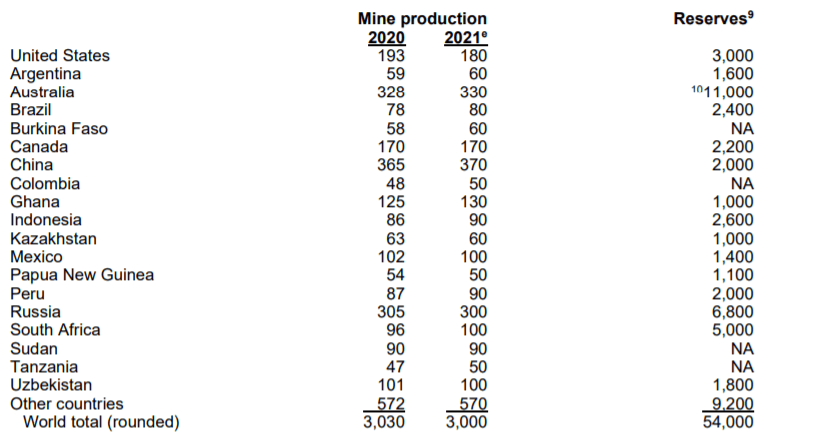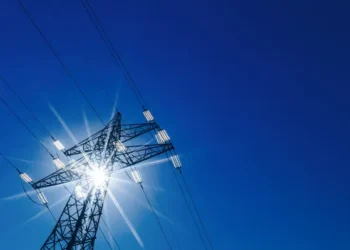Ghana’s gold production rebounded strongly, surpassing 125 tons mark in 2020 by 5 tons more in 2021 despite global production remaining slightly softer, concretizing Ghana’s lead as the continent’s biggest gold producer.
Data released by the US Geological Survey (USGS) showed that Ghana’s gold production rose to an estimated 130 tons, up 4 per cent from 125 tons produced in the year prior during which period, global producers were severely hit by Covid-19 disruptions.
Playing second fiddle to Ghana was South Africa, which produced 100 tons of gold in 2021, up from 96 tons in the previous year, followed by Sudan with gold output of 90 tons in 2021 unchanged from that of the previous year.
While Ghana maintained its 6th position on the league of gold producers in the world per the USGS data, South Africa was the 8th largest gold producer in the world in 2021. The first five leading gold producers worldwide were: Australia, China, Russia, United States and Canada.
Three of these countries: Australia, China and Russia each produce more than 300 tons of the yellow metal a year, dwarfing by far, the output of Ghana and South Africa combined in the year.

Largest Gold Reserves
In terms of quantum of gold reserve deposits, South Africa holds as much as 5000 tons compared to 1000 tons of gold reserves in Ghana. This amount of South African gold reserves is the third largest in the world, trumped only by 6800 tons in Russia and 11000 tons in Australia, the US Geological Survey showed.
Although sizeable, South Africa’s reserves are increasingly uneconomic to access because of the increasing depth of the ore bodies as well as high input costs such as electricity and labour.
That said, South Africa’s mining sector continues to experience recurring challenges including country-wide rioting, major power outages, stubbornly high costs, and geologic challenges in the mining and quarrying sector which affected gold production during the course of the year.

In comparison, Ghana’s mining and quarrying sector experienced relatively stable political atmosphere, lower-cost mines, friendlier policies, which aided production and development in the year. Nonetheless, the environmental consequences of illegal mining (galamsey) is one of the biggest challenges facing the sector, and which the authorities are working to suppress.
“Worldwide gold mine production was estimated to be slightly less– dropping from 3030 tons to 3000 tons- as lower gold mine production in Papua New Guinea, Russia, and the US more than offset production increases in South Africa, Ghana, Tanzania, China and Indonesia”.
USGS
In the first 9 months of 2021, global consumption of gold in physical bars increased by about 58 per cent, in jewelry by 49 per cent, in industrial applications by 16 per cent, in electronics by about 13 per cent, and in official coins and medals and imitation coins by about 6 per cent compared with that in the first 9 months of 2020.
As a securitized commodity, global investments in gold-based exchange-traded funds decreased by almost 116 per cent, while gold holdings in central banks doubled during the same period.
According to the release, “an assessment of U.S. gold resources indicated 33,000 tons of gold in identified (15,000 tons) and undiscovered (18,000 tons) resources. The gold resources in the United States, however, are only a small portion of global gold resources”.
In 2021, worldwide gold mine production was estimated to be slightly less than in 2020, although the impact of the Covid-19 pandemic on the sector dwindled and prices of gold rose to record highs. Operational challenges in some mines across the world as well as heightened political risks in some countries could be classified as factors that impeded growth in output.
READ ALSO: Uncertainty Surrounding Fiscal Correction Prevented an Upgrade in Ghana’s Ratings- S&P























